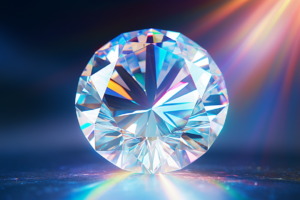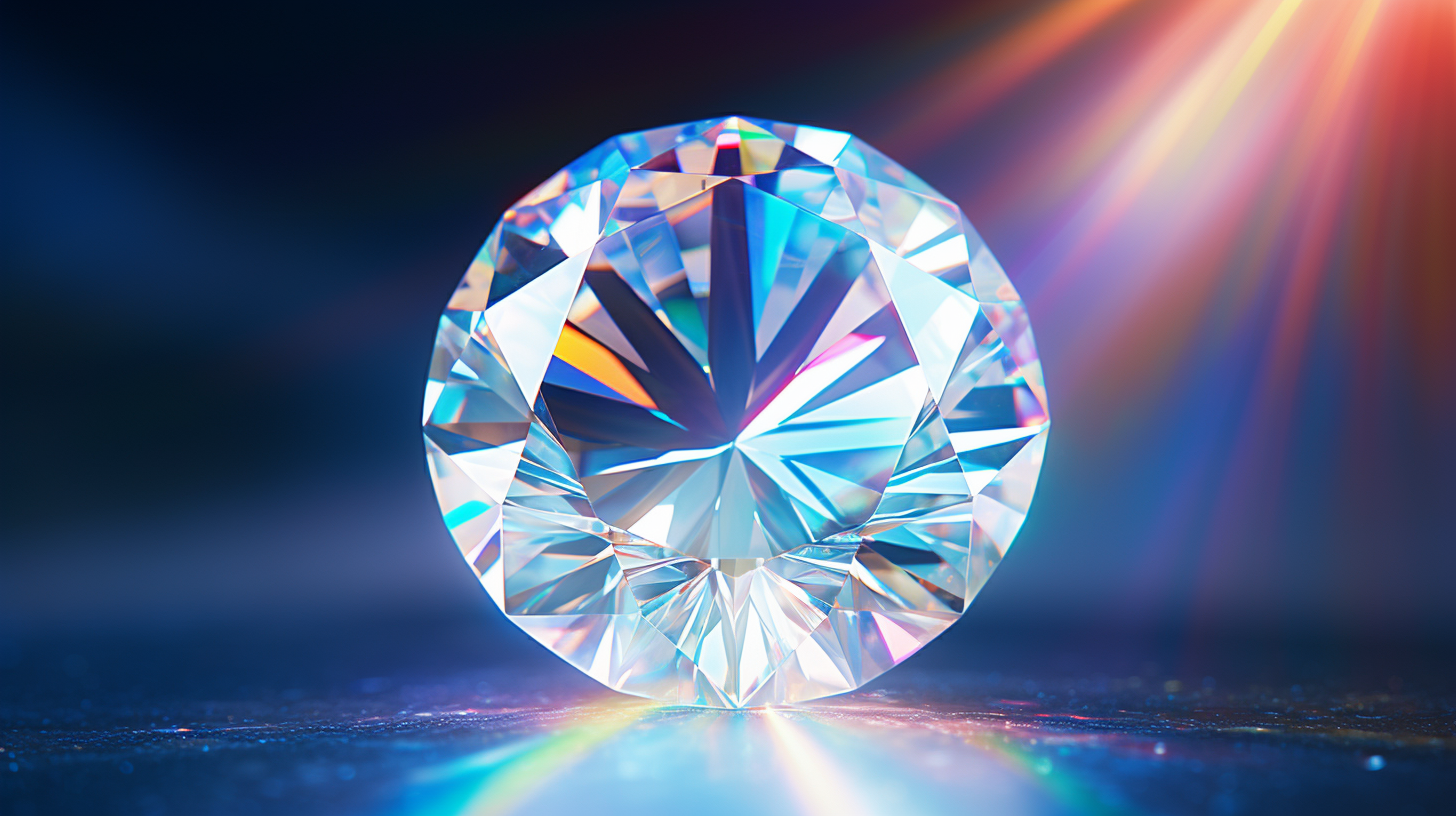Lab-grown diamonds, also known as synthetic, manufactured, or cultivated diamonds, are emerging as a popular and ethical alternative to mined diamonds. With advanced production technologies, improved quality, and greater environmental and social benefits, lab-grown diamonds are poised to disrupt the traditional diamond industry.
Consumer Preference Shifts as Lab-Grown Diamond Market Booms
Industry reports indicate surging demand and acceptance of lab-grown diamonds among consumers. A 2018 MVEye study found that 30% of millennials would consider a lab-grown diamond, while a 2019 report by MVI Marketing claims the lab-grown diamond market could reach 7.5% of the total diamond market by 2020. This shift in preference is fueling incredible growth, with the global lab-grown diamond market projected to reach $27 billion by 2023 according to Allied Market Research.
“There is no doubt we are witnessing a paradigm shift,” said Clara Stone, president of the Laboratory-Grown Diamond Association. “Consumer perceptions of lab-grown diamonds are changing as technological advances have made them indistinguishable from mined diamonds.”
The Diamond Industry Transforms in Response to Rising Lab-Grown Popularity
In response to the meteoric rise of lab-grown diamonds, the traditional diamond industry is evolving its practices. Many jewelers now offer both mined and lab-grown diamonds, and the FTC changed its diamond definition in 2018 to designate lab-grown diamonds as real diamonds. Major miners like De Beers have also invested in lab-grown diamond production.
“It’s clear the diamond industry sees the writing on the wall,” said industry expert Kristen Clarke. “They are adapting to the demand for more ethical and affordable diamond options that lab-grown gems provide.”
Sustainability and Eco-Friendliness: The Environmental Edge of Lab-Grown Diamonds
“Lab-grown diamond production has up to 30x lower carbon emissions compared to mining”—LGD Association Report
A key factor driving lab-grown diamond popularity is their sustainability benefits. Production methods use renewable energy, recycle gases, and emit far less CO2 than mining. The LGD Association estimates lab-grown diamond production has 30x lower carbon emissions than mining. Lab-grown diamonds also eliminate environmental damage from mining operations.
“Customers today care deeply about reducing their environmental impact,” said jeweler David Fern. “Lab-grown diamonds allow us to provide brilliant gems with a lighter ecological footprint.”
Surging Market Set to Disrupt Mined Diamond Dominance
Lab-grown diamonds accounted for 2-3% of the diamond jewelry market in 2020, but with annual growth exceeding 20%, experts predict they could comprise 7-10% by 2025. This enormous growth places lab-grown diamonds on a trajectory to disrupt the traditional diamond industry.
De Beers’ 2021 report acknowledged this trend, projecting lab-grown diamonds could represent 50% of the affordable fashion jewelry diamond market within a decade. However, mined diamond companies downplay the influence on high-end jewelry diamonds.
Celebrity Buzz and Big Investments in Lab-Grown Sector
Lab-grown diamonds are gaining publicity with celebrity collaborations from Leonardo DiCaprio to Scarlett Johansson. The diamond industry is also investing billions into lab-grown production, with De Beers investing $94 million in a US lab-grown diamond facility in 2020.
“Seeing these big names get behind lab-grown diamonds really spreads awareness,” noted industry watcher Emma Gems. “It’s helping drive mainstream acceptance.”
Advanced Technologies Enabling Mass Production and Price Parity
With advanced production technologies like CVD and HPHT, lab-grown diamonds can be produced on an unprecedented scale. Automation and global expansion of facilities, like in China and India, have also enabled mass production that lowers prices.
The result is lab-grown diamonds reaching price parity with mined diamonds: a lab-grown 1-carat diamond costs $3,600 on average in 2022 compared to $4,100 for a mined diamond according to IGDA statistics. This makes them an affordable option at all levels of diamond jewelry markets.
Consumer Education Key to Informed Purchasing Decisions
Despite the growth, consumer research by MVI Marketing in 2021 found 71% of customers remain unsure if lab-grown diamonds are “real” diamonds. However, the FTC does classify them as real; the difference lies in their origin. More consumer education on lab-grown diamonds will empower shoppers to make informed decisions.
“We always explain the difference when customers ask about lab-grown diamonds,” noted jeweler Sarah Green. “Once they understand that lab-grown are real diamonds, just sustainably produced, they feel confident making a choice.”
Transparent Origins and Ethical Production Practices
A key advantage of lab-grown diamonds is their transparent chain of custody. They are produced in regulated facilities that follow ethical practices, not mined in war-torn regions associated with human rights abuses. Each lab-grown diamond has a known place of origin and traceable production history.
Human rights advocacy group Amnesty International sees this transparency as a benefit for consumers. “Lab-grown diamonds go from raw materials to finished gems under controlled conditions focused on environmental stewardship and fair labor practices,” said Amnesty’s ethical sourcing director.
Lab-Grown Diamond Prices Fall as Production Scales Up
| Year | Average Price for 1 Carat Lab-Grown Diamond | Average Price for 1 Carat Mined Diamond |
|---|---|---|
| 2018 | $4,800 | $6,100 |
| 2021 | $3,600 | $4,100 |
Prices for lab-grown diamonds have fallen sharply with mass production. The table above shows average prices for a 1-carat lab-grown diamond declining 25% from 2018 to 2021. This downward trajectory is pressuring the traditional diamond industry as lab-grown become a competitively priced alternative.
Future of Diamond Industry Rides on Market Competition
Most experts agree lab-grown diamonds will continue disrupting the jewelry industry. But how much market share lab-grown diamonds accrue depends on how traditional diamond companies adapt.
“The future will be driven by how successfully the diamond industry responds to competitive threats from lab-grown gems,” explained industry analyst James Cameron. “Those defending old business models will suffer, while companies that adapt to the lab-grown trend will prosper.”
Lab-Grown vs. Mined Diamond Comparison
| Lab-Grown Diamond | Mined Diamond | |
|---|---|---|
| Origin | Manufactured in lab | Mined from earth |
| Carbon Footprint | Low | High |
| Production Transparency | Traceable origins | Varies, may be unclear |
| Availability | Supply increasing with production scaling | Limited as natural resource |
| Price | Declining with mass production | Relative scarcity maintains value |
| Quality | Optically and chemically identical to mined | Natural minor imperfections |
This table summarizes key comparisons between the two diamond sources. Lab-grown diamonds offer sustainability and supply advantages while mined diamonds retain value from scarcity and perception as “natural” diamonds.
Lab-grown diamond space at Luxurydiamonds.ca
At Luxurydiamonds.ca, we are thrilled to provide access to these brilliant stones. As pioneers in the lab-grown diamond space, we carry an extensive selection of certified, high-quality lab-grown diamonds. Ranging from 0.50 carats to over 5 carats, our inventory allows you to choose dazzling loose lab-grown diamonds or have them set in the engagement ring or fine jewelry design of your dreams.
In our state-of-the-art showroom or through our user-friendly online store, you can view hundreds of lab-grown diamonds through 360° HD imaging. Our non-commissioned diamond experts will also provide guidance to help you select the perfect fit for your style and budget. At https://luxurydiamonds.ca, you can feel confident that each lab-grown diamond is authenticated by GIA or AGS grading reports and meets premium quality standards.
The future belongs to those beautiful, brilliant, and eco-friendly lab-grown diamonds. Experience these innovative gems for yourself and visit Luxurydiamonds.ca to explore our collection today!
Conclusion: A Brilliant Eco-Friendly Future for Lab-Grown Diamonds
Lab-grown diamonds are more than just a trend. With their green credentials, ethical sourcing, and price advantage, they represent the future of diamonds. Their meteoric rise signals a monumental shift in consumer attitudes and industry practices.
While the mined diamond industry remains dominant, lab-grown diamonds are steadily claiming market share across jewelry categories. Their production will only accelerate with further technological innovations. It seems certain that these brilliant, ethically produced gems will continue shining as a sustainable and economical option for fashion-forward consumers.
FAQs
Are lab-grown diamonds fake?
No, lab-grown diamonds are chemically identical to mined diamonds and certified as real by grading labs like GIA and AGS. The only difference is their origin in an artificial growth process rather than natural mining.
Why are lab-grown diamonds cheaper?
They can be mass produced efficiently through technological processes like CVD and HPHT. This scalable production yields more supply to meet demand, keeping prices low.
Do lab-grown diamonds hold value like mined diamonds?
Not currently, as their price depends on production costs rather than perceived scarcity. But if production slowed and demand rose, lab-grown prices could increase and hold value similarly to mined diamonds.
How are lab-grown diamonds more sustainable?
They have a much lower carbon footprint, about 30 times less emissions than mining. Lab production also eliminates environmental damage from diamond mining operations.
Can you tell the difference between lab-grown and mined diamonds?
Only a trained gemologist with specialized equipment can distinguish between them. To the naked eye, they are optically identical. Labs like GIA issue the same grading reports for lab-grown and mined diamonds.






